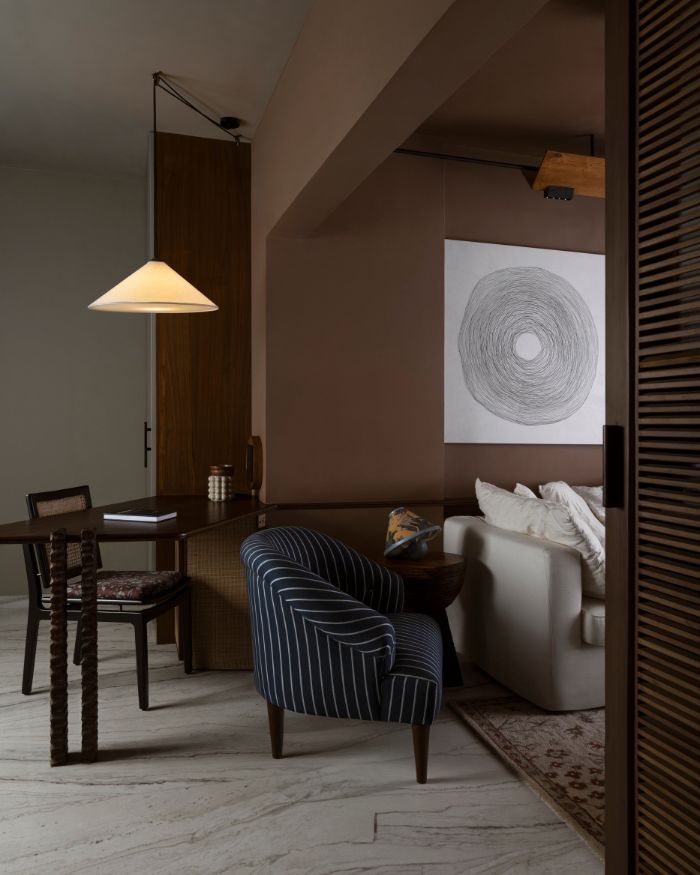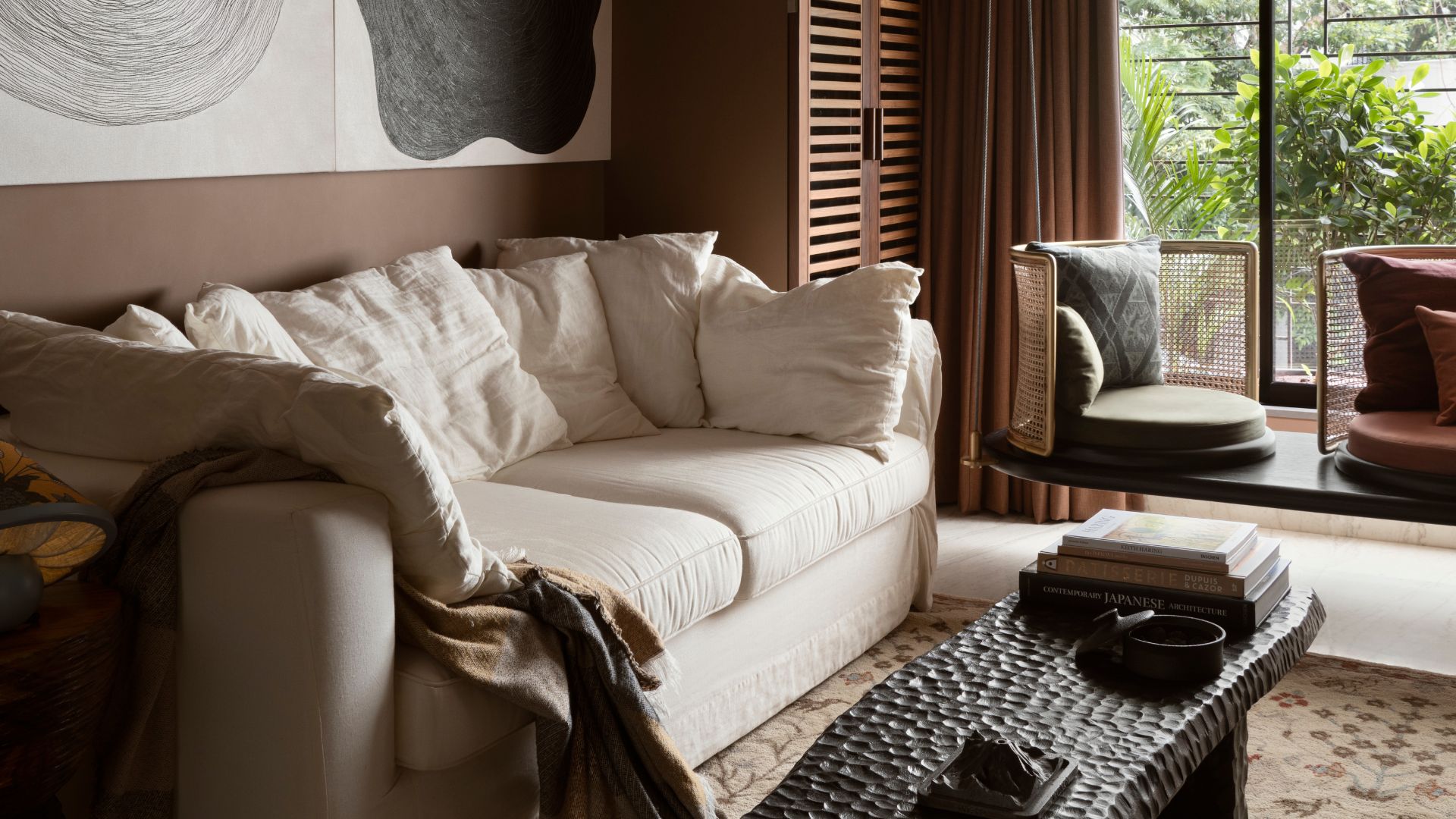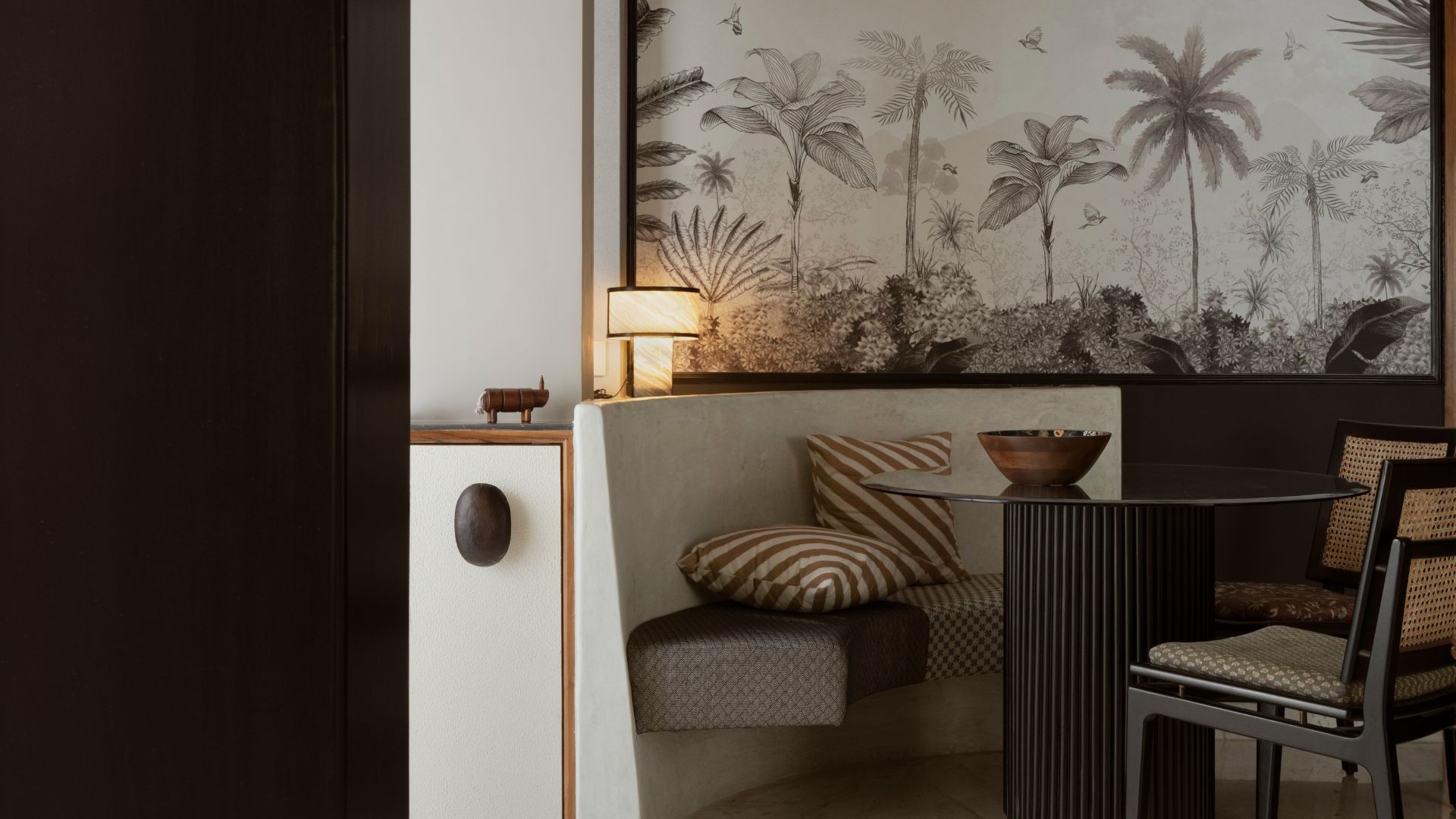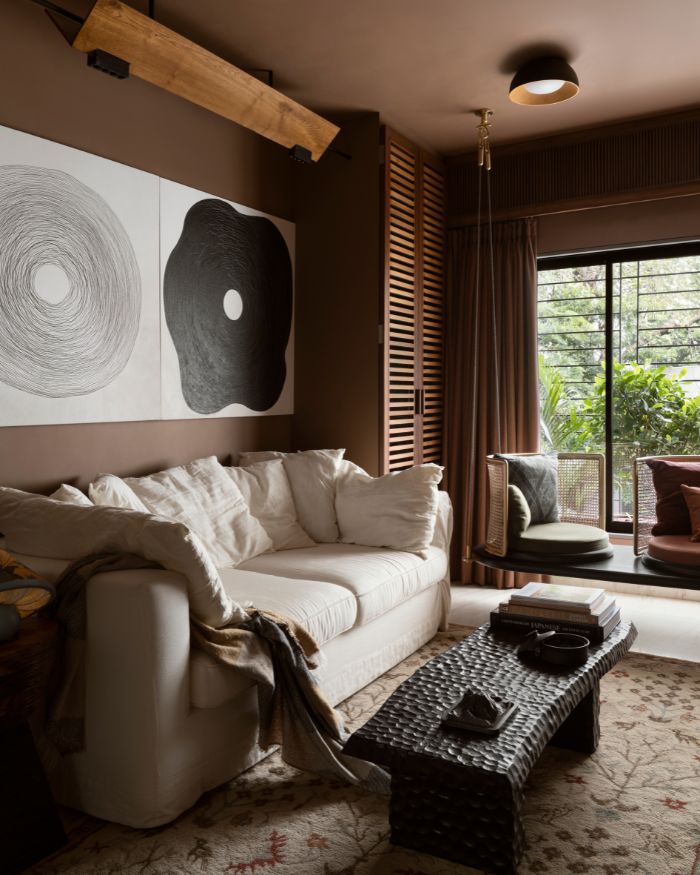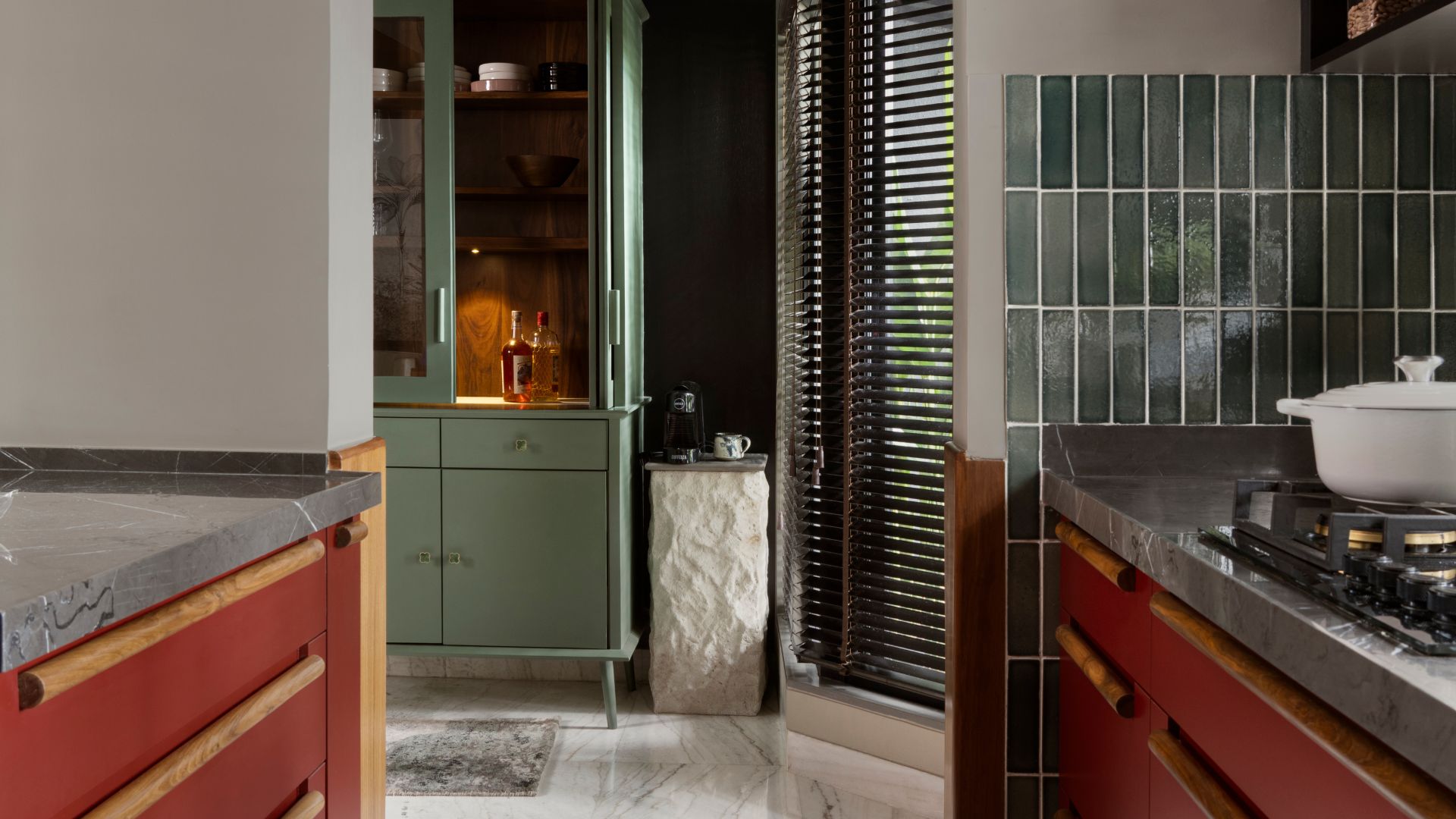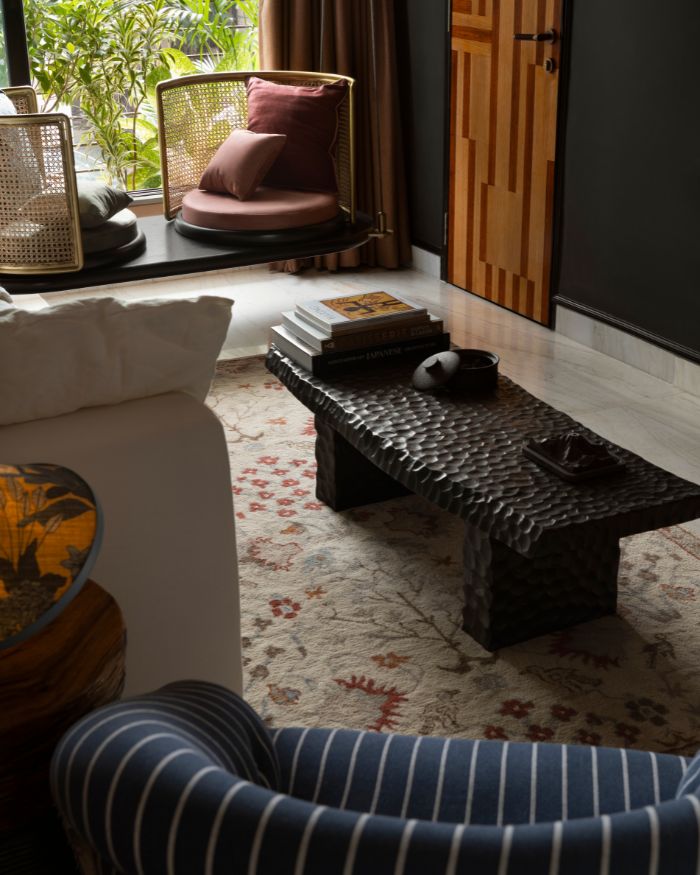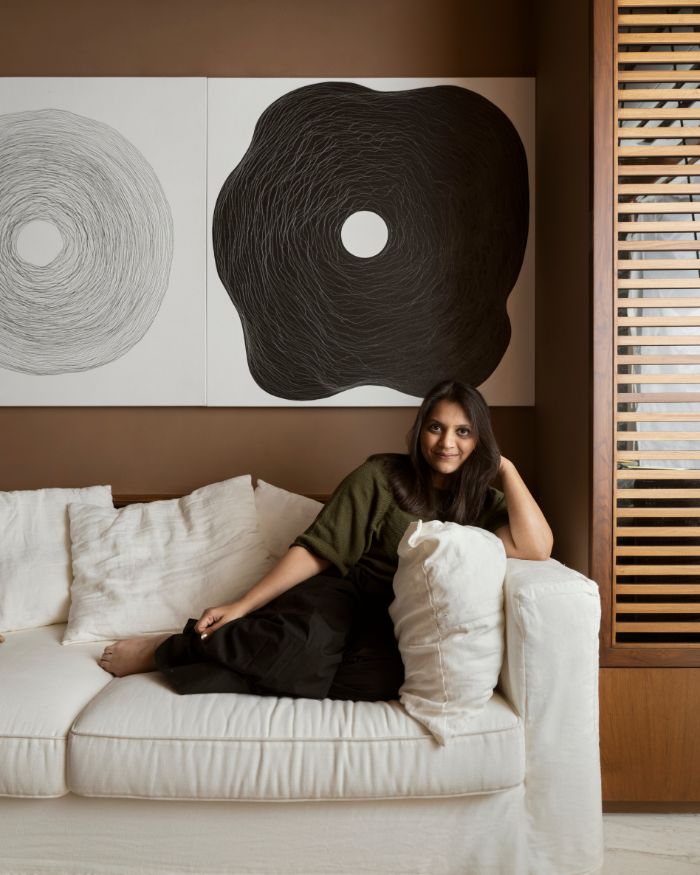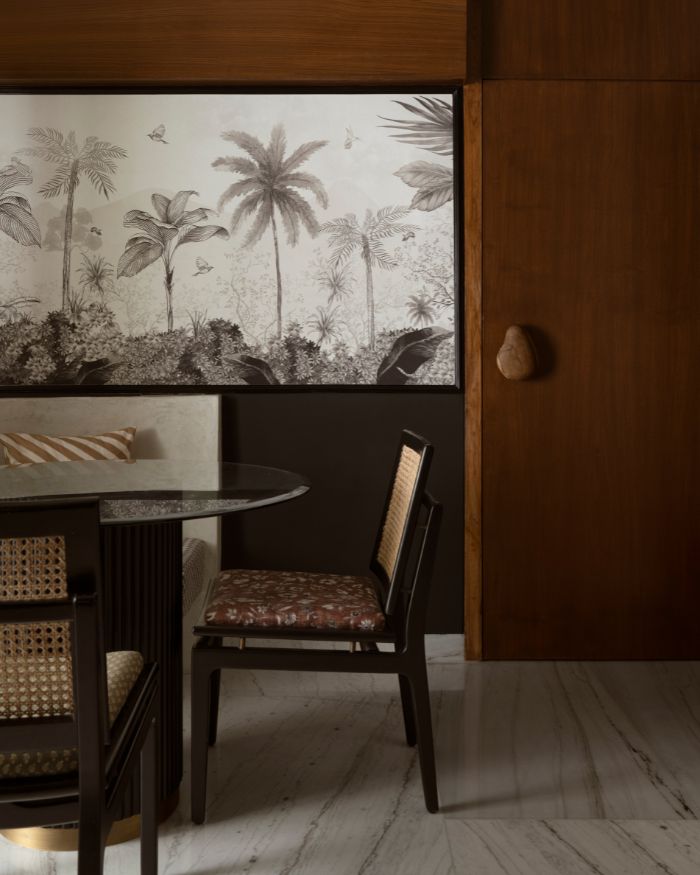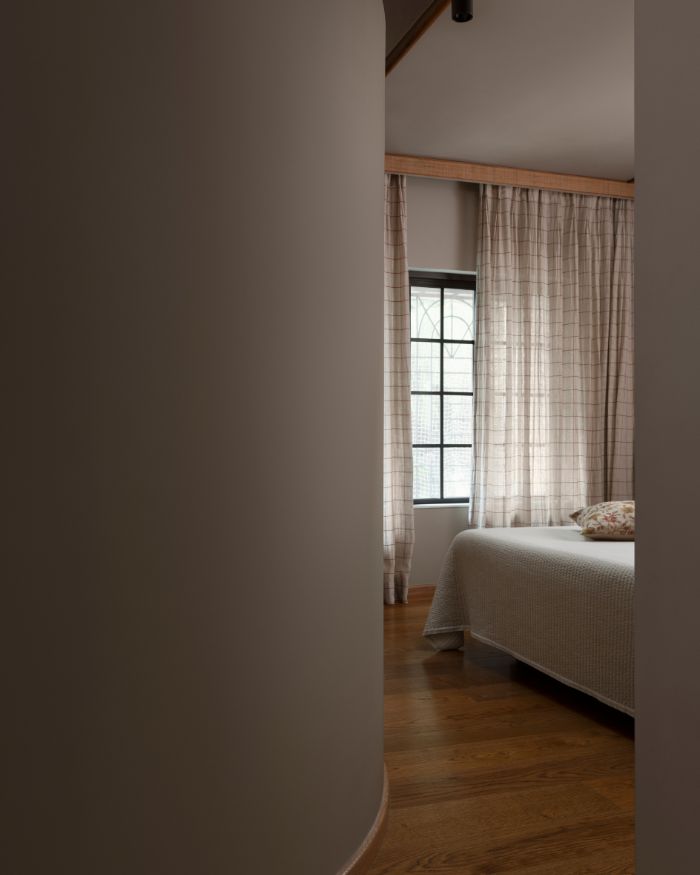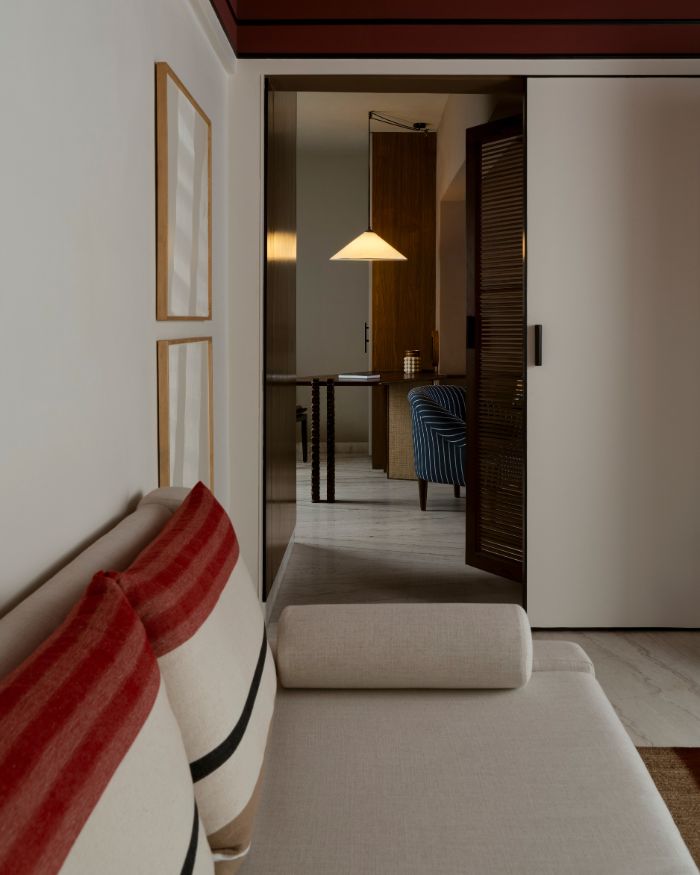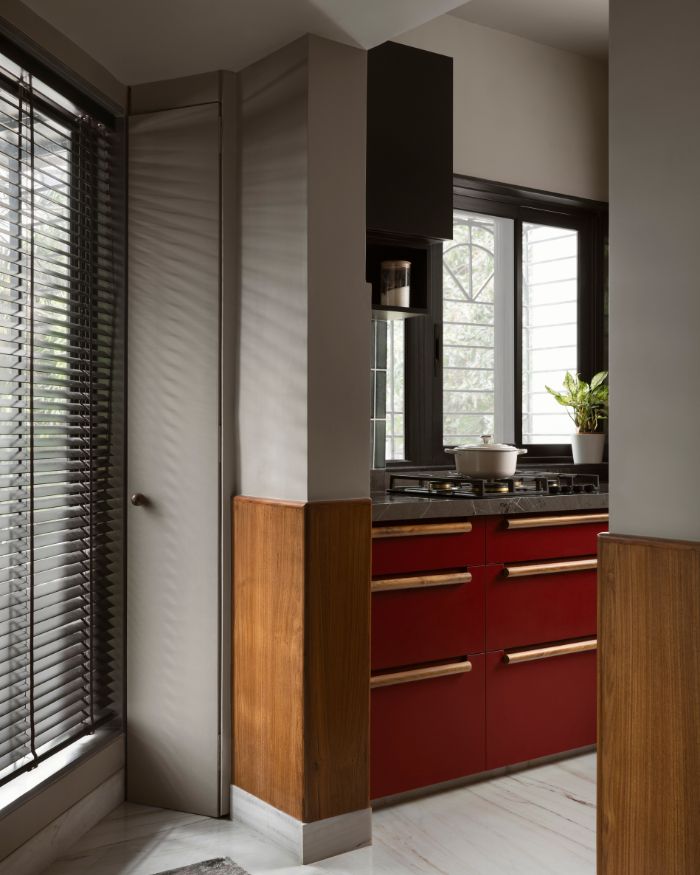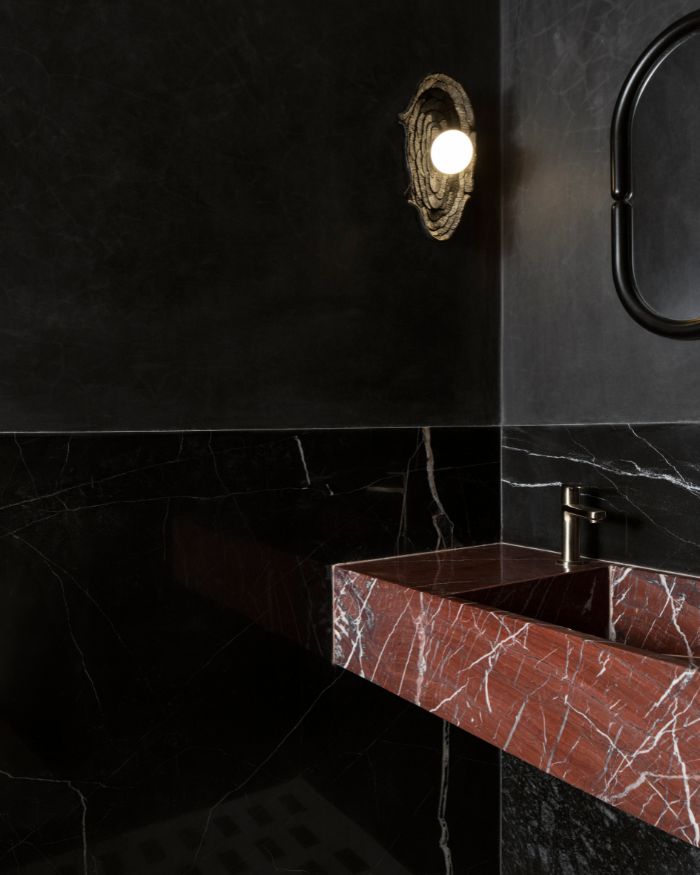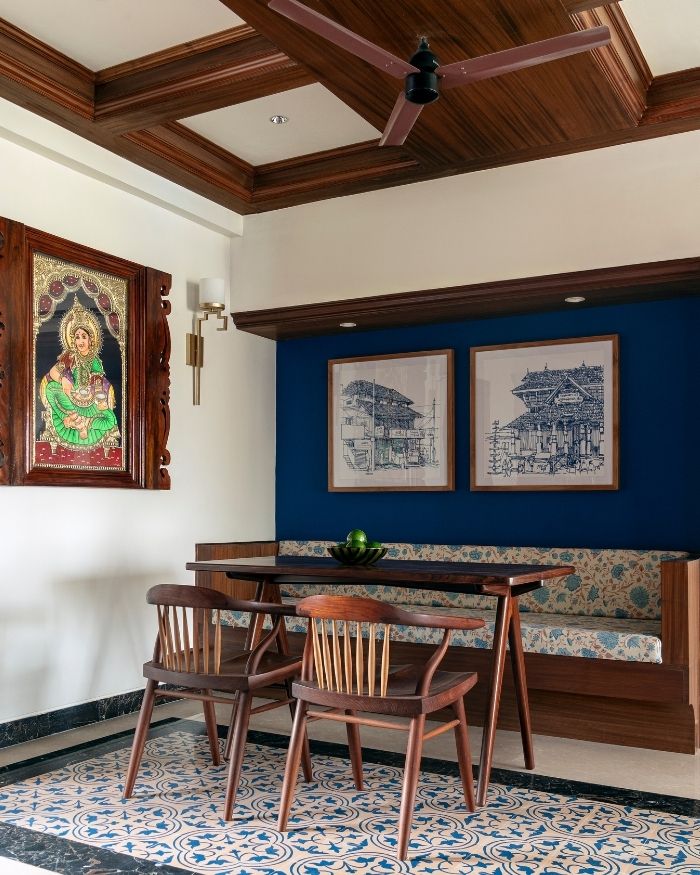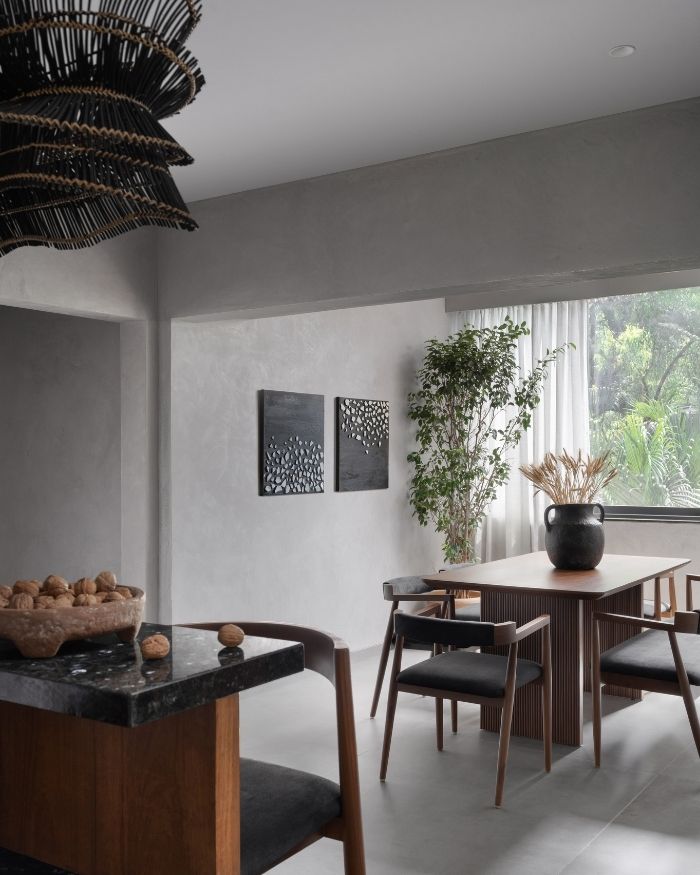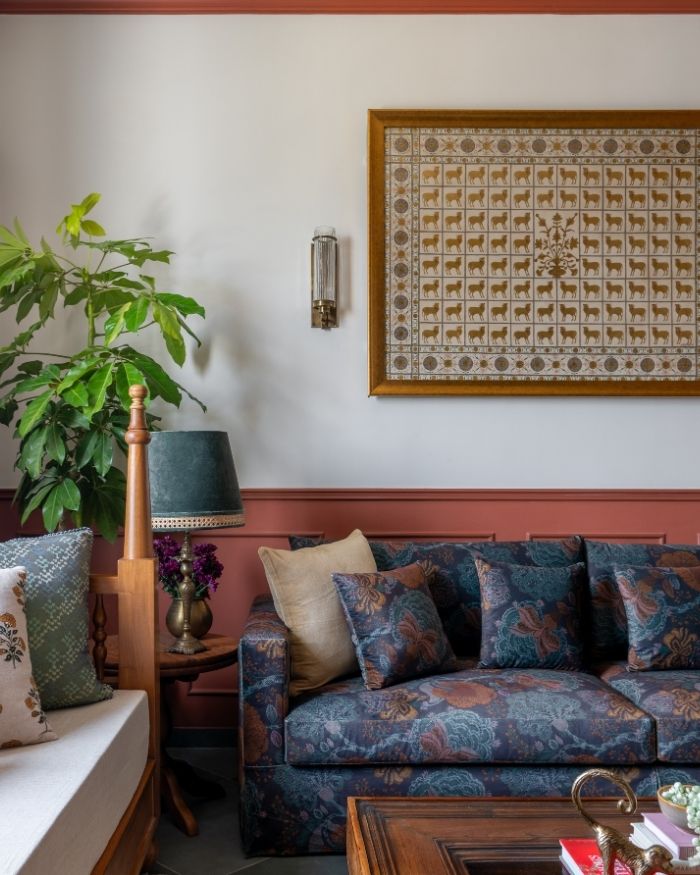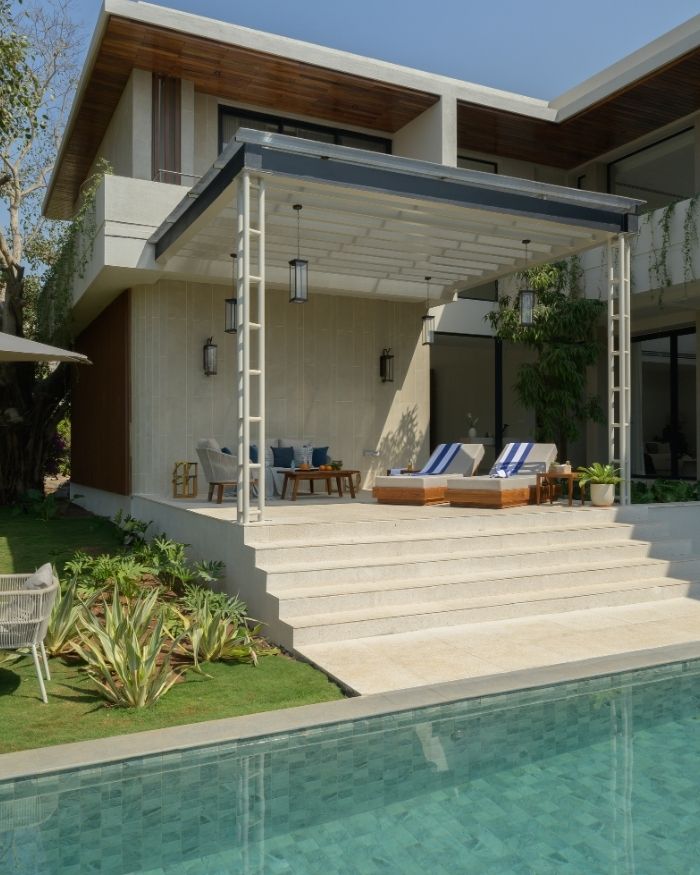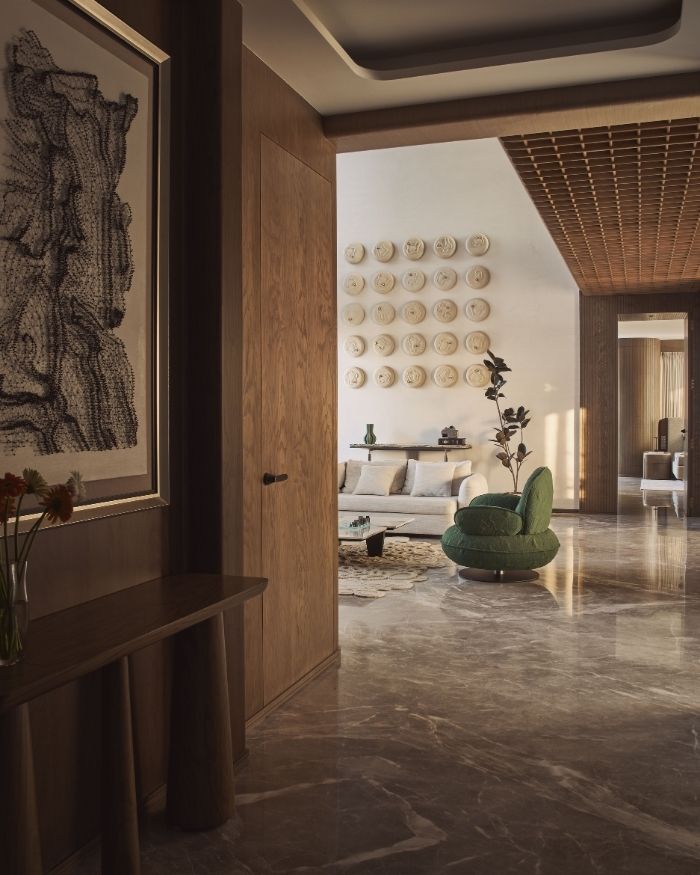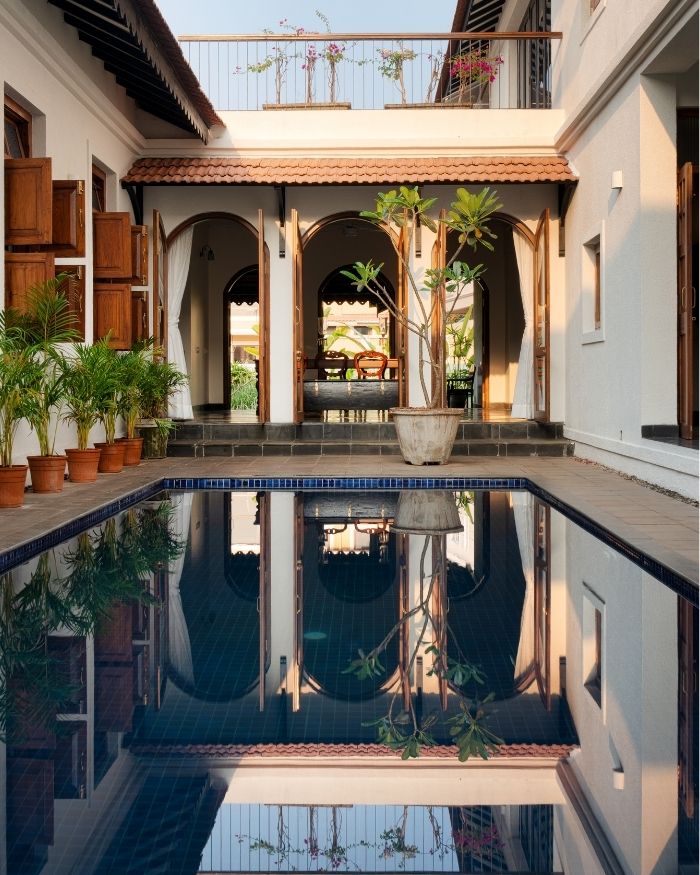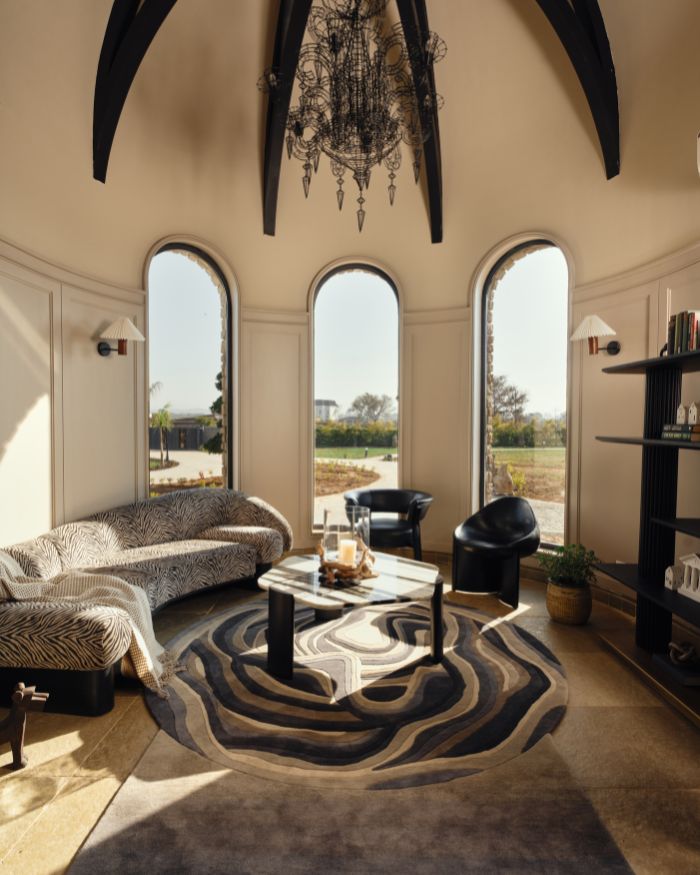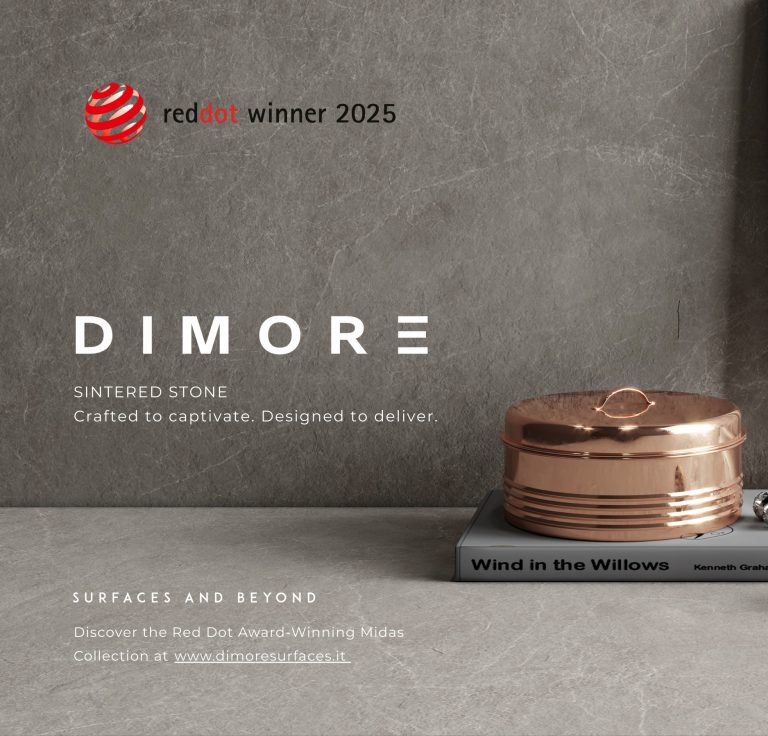Small spaces are one of the most notorious urban design challenges. In Nishita Kamdar’s apartment in Mumbai, she made sure that as an architect, she would make the most of it. The first clue lies in the red ceiling visible from the outside. “This is the first apartment that you see from the street,” she tells us, “The usual reaction is ‘Who on earth has done this red ceiling in the house?’ The curiosity it creates is amazing.”
Most people, when faced with the challenges of designing for small spaces, resort to two extremes: picture-perfect minimalism with no lived-in character or spiralling into superfluous clutter. If there’s a Goldilocks zone in design, Nishita’s apartment lands squarely in it, striking just the right balance between spatial intrigue and a warm, inviting energy.
SAME SPACE, DIFFERENT CHARACTERS
Inside the 800 sq ft house, each element has been crafted with intention. It was important to her to avoid any 90-degree angles or parallel directions, opting instead for curved walls that act as gestures of movement. What stands out the most is how the space feels unbound, with sightlines leading to the verdure outside (a treasured aspect not many are blessed with in the city) and the riveting familiarity of the sea being never too far.
"If you ask any architect, they'd always say that designing your own home is an absolute pain. You don't know when you stop as an architect and when you step in as a client" — Nishita Kamdar
